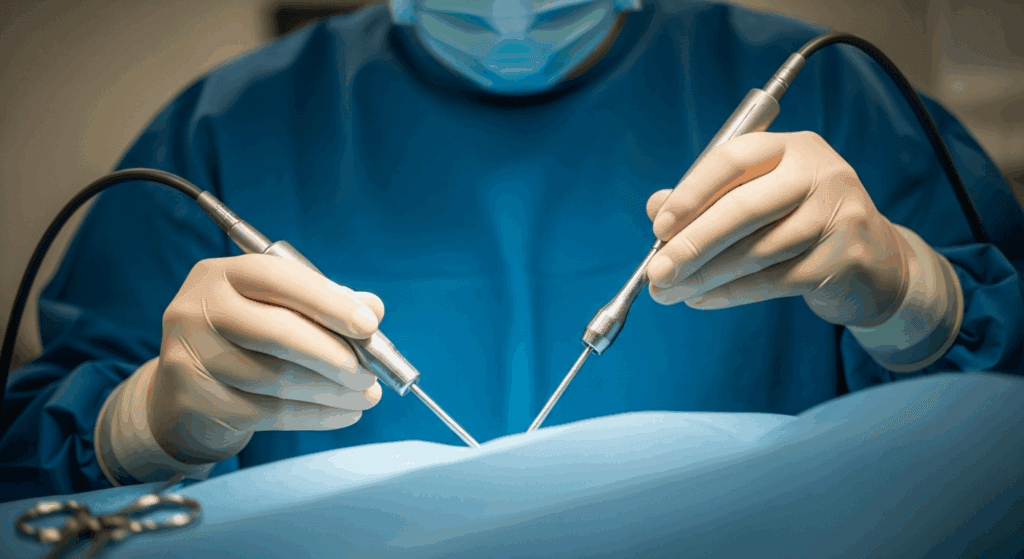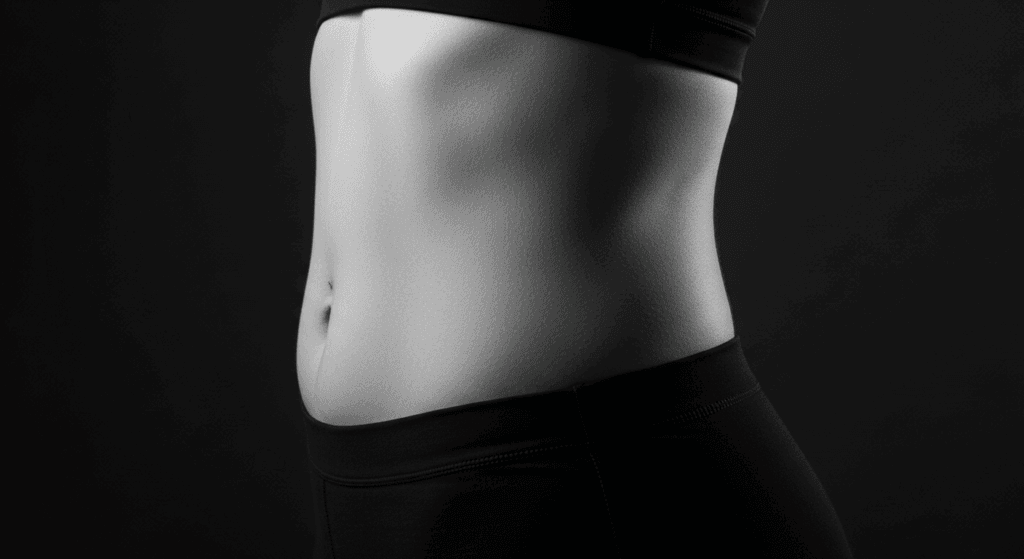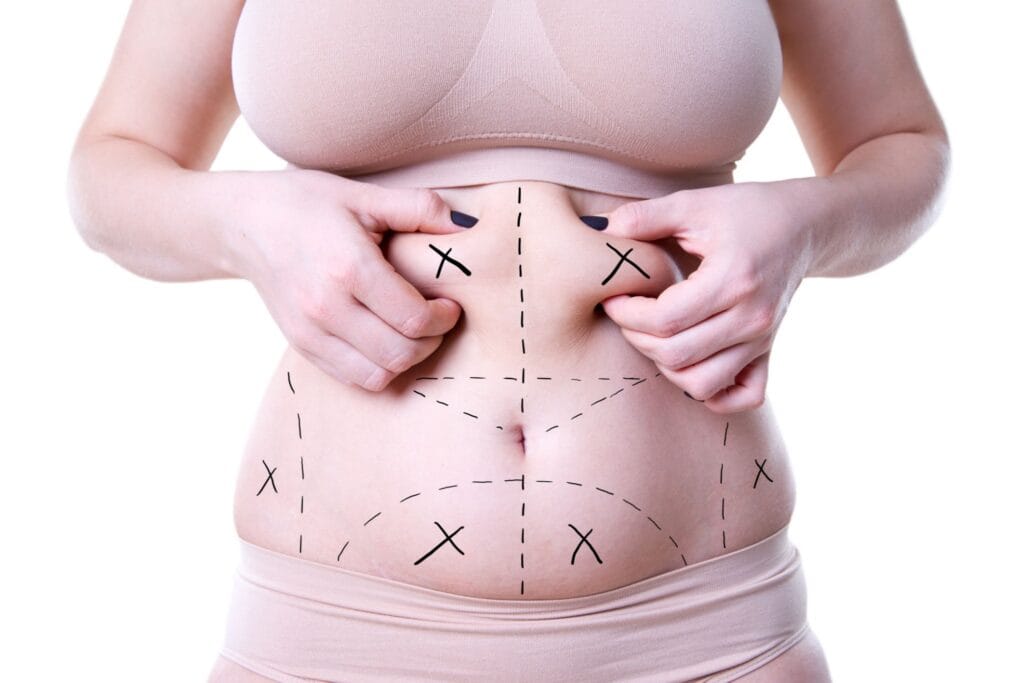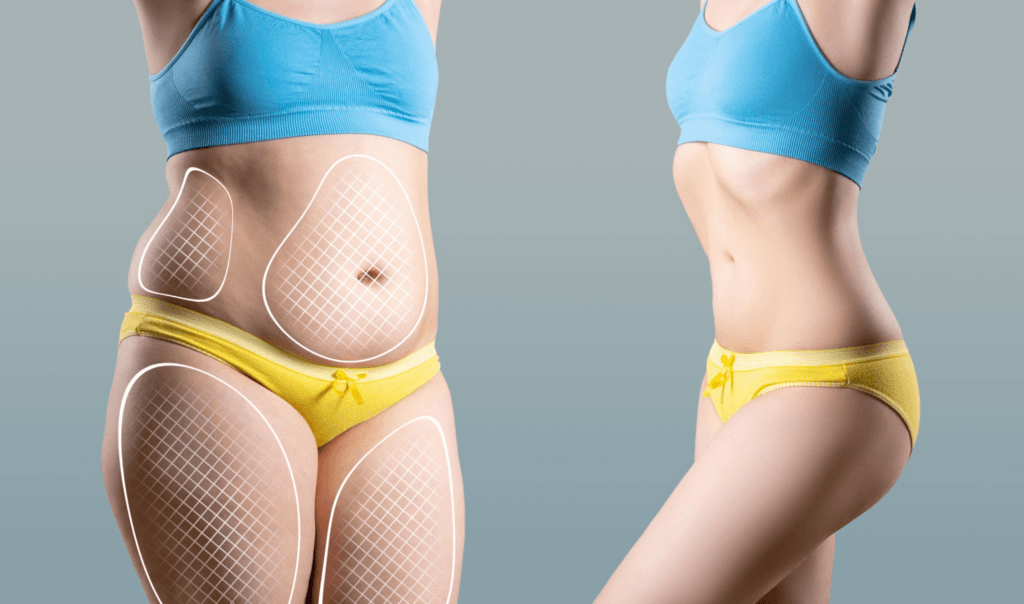Considering a cosmetic procedure is a significant personal journey, and for those seeking to refine their body contours, liposuction stands out as a popular and effective option. This surgical intervention targets stubborn fat deposits that often resist diet and exercise, offering a path to a more sculpted physique. Understanding the entire liposuction procedure, from initial consultation to long-term recovery, is crucial for anyone contemplating this transformative step.
Liposuction is not a weight-loss solution but rather a body contouring technique designed for individuals near their ideal weight who have localized areas of fat. It can dramatically enhance body shape, boosting confidence and improving overall appearance. However, like any surgical intervention, it requires careful consideration, thorough preparation, and a clear understanding of what lies ahead.
This comprehensive guide will walk you through every stage of the liposuction journey, ensuring you are well-informed and prepared. We will cover:
- The fundamental definition and goals of the liposuction procedure.
- Essential steps for preparing yourself both physically and mentally.
- A detailed overview of what to expect during the surgery itself.
- Managing the recovery period and optimizing your results.
- Understanding the potential risks and how to minimize them.
- Key factors influencing the cost and how to choose a qualified surgeon.
By the end of this article, you will have a clear and comprehensive understanding of the liposuction procedure, empowering you to make confident and informed decisions about your aesthetic goals. Let’s explore the details of this body-sculpting journey.

جدول المحتويات
Understanding the Liposuction Procedure: Definition and Candidate Profile
Liposuction, often simply referred to as “lipo,” is a surgical technique designed to remove excess fat from specific areas of the body, thereby sculpting an improved shape [7, 13]. It is a powerful tool for refining body contours, helping individuals achieve a more proportionate and aesthetically pleasing physique. This procedure is distinct from weight-loss methods and is not intended to address overall obesity [1]. Instead, it focuses on localized fat deposits that are resistant to traditional weight management strategies like diet and exercise [2, 16].
Defining Liposuction and Its Primary Goals
At its core, liposuction involves the use of a thin, hollow tube called a cannula, which is inserted through small incisions in the skin. This cannula is then used to loosen and suction out unwanted fat cells from targeted areas [8, 10]. The primary goal of a liposuction procedure is to enhance body shape and contour, rather than to achieve significant weight reduction [13, 16]. Common areas treated include the abdomen, hips, thighs, buttocks, arms, and neck [8, abdominal-liposuction-flatter-stomach, liposuction-thighs-inner-outer-fat, liposuction-of-the-arms-reducing-upper-arm-fat, liposuction-of-the-chin-and-neck-refining-the-jawline]. It is a refining procedure that helps patients achieve a more defined and aesthetically pleasing silhouette [13]. For a more detailed look into what liposuction entails, you can visit our guide on ما هي عملية شفط الدهون؟ [5].
Ideal Candidates for the Liposuction Procedure
The most satisfied candidates for a liposuction procedure are typically those who are at a stable body weight but struggle with specific pockets of fat [2, 14]. It is important that candidates have good skin elasticity, as liposuction does not significantly improve the appearance of loose skin [15]. Individuals in good overall health, without life-threatening medical conditions or chronic illnesses, are generally considered suitable. Non-smokers are also preferred due to better healing capabilities. A realistic understanding of the outcomes and expectations is paramount for patient satisfaction [14]. To learn more about who might not be a good candidate, consider reviewing resources on من لا ينبغي له إجراء عملية شفط الدهون؟ [10].
Preparing for Your Liposuction Procedure: Before Surgery
Thorough preparation is a cornerstone of a successful and safe liposuction experience. The pre-operative phase involves several critical steps, including detailed consultations, comprehensive medical evaluations, and adherence to specific instructions provided by your surgeon. This meticulous approach ensures that you are physically ready for the surgery and fully understand what to expect.
Initial Consultation and Goal Setting
Your journey begins with an in-depth consultation with a qualified cosmetic surgeon. During this meeting, you will discuss your aesthetic goals, the areas you wish to address, and your medical history. The surgeon will assess your overall health, skin elasticity, and the extent of fat deposits to determine if you are a suitable candidate for the liposuction procedure [19]. This is also the time to clarify any questions you may have and ensure your expectations align with what the procedure can realistically achieve. An experienced surgeon will provide transparent communication about potential results and any limitations [20].
Medical Evaluation and Pre-Operative Instructions
Prior to surgery, you will undergo a comprehensive medical evaluation, which may include blood tests, a physical examination, and a review of any existing medications. Your surgeon will provide specific pre-operative instructions, which typically include avoiding certain medications (like aspirin, anti-inflammatory drugs, and herbal supplements) that can increase bleeding, and refraining from smoking for several weeks before surgery [9]. Following these instructions precisely is vital for minimizing risks and ensuring a smooth recovery. For further guidance on pre-operative steps, you can refer to articles on pre-operative tests and consultations.
The Liposuction Procedure: Techniques and Steps
The actual liposuction procedure involves several key stages, from the administration of anesthesia to the meticulous removal of fat. Advances in surgical techniques have led to various methods, each designed to optimize results and patient comfort. Understanding these techniques can help you discuss the best approach with your surgeon.
Anesthesia and Incision Placement
For your comfort during the liposuction procedure, medications are administered. Your doctor will recommend the best choice for you, which may include intravenous sedation or general anesthesia [9]. Once the anesthesia has taken effect, small, inconspicuous incisions are made in the target areas. Before fat removal, a diluted local anesthetic solution is typically infused into the treatment area. This solution, often containing lidocaine and epinephrine, helps to numb the area, reduce bleeding, and minimize trauma during the procedure [10].
Fat Removal and Body Sculpting
Through these small incisions, a thin, hollow tube known as a cannula is inserted. The surgeon then uses a controlled back-and-forth motion to loosen the excess fat cells. The dislodged fat is then suctioned out of the body using a surgical vacuum or a syringe attached to the cannula [8, 10]. The surgeon carefully sculpts the area, aiming for smooth, natural-looking contours. The skill and experience of the cosmetic surgeon performing liposuction make a significant difference in the final results [20].
استكشاف تقنيات شفط الدهون المختلفة
Various liposuction techniques exist, each with its own advantages. Traditional liposuction involves breaking up fat with a cannula and removing it with a high-pressure vacuum. Power-assisted liposuction (PAL) uses a vibrating cannula to more easily break up stubborn fat. Ultrasound-assisted liposuction (UAL) and its newer form, VASER liposuction, utilize ultrasonic vibrations to dissolve fat. Laser-assisted liposuction employs a laser for fat dissolution, while water-assisted liposuction uses a pressurized saline stream to loosen fat cells [11]. Your surgeon will discuss the most appropriate technique for your individual needs. For a comprehensive overview of these methods, explore our guide on Comprehensive Guide to Different Types of Liposuction [6].

During the Liposuction Procedure: What to Expect in the Operating Room
Knowing what happens during the actual surgical phase of your liposuction procedure can help alleviate anxiety and provide a sense of control. While you will be under anesthesia, understanding the process ensures you are mentally prepared for the experience.
Ensuring Patient Comfort and Safety
From the moment you enter the operating room, the medical team prioritizes your safety and comfort. Anesthesia, whether intravenous sedation or general anesthesia, is carefully administered and monitored throughout the procedure [9]. Vital signs, including heart rate, blood pressure, and oxygen levels, are continuously tracked by an anesthesiologist or certified nurse anesthetist. The surgical environment is sterile, and all instruments are meticulously prepared to prevent infection [4].
The Surgical Process in Detail
Once you are comfortably anesthetized, the surgeon will proceed with the chosen liposuction technique. Small incisions, typically only a few millimeters in length, are made in discreet locations. The tumescent fluid is then injected, which helps to further numb the area, constrict blood vessels, and make fat removal easier. The cannula is then carefully manipulated beneath the skin to break up and suction out the unwanted fat. This process is precise and artful, as the surgeon works to sculpt the desired contours. The duration of the liposuction procedure varies depending on the amount of fat to be removed and the number of areas being treated [10].

Liposuction Recovery: Immediate Post-Operative Period and Beyond
The recovery phase is a critical component of the liposuction journey, directly impacting the final results. Understanding what to expect immediately after surgery and in the weeks that follow is essential for a smooth and effective healing process.
Managing Swelling, Bruising, and Discomfort
Immediately after the liposuction procedure, you can expect some swelling, bruising, and discomfort in the treated areas. Your surgeon will likely prescribe pain medication to manage any pain. Compression garments are typically worn continuously for several weeks to help reduce swelling, promote skin retraction, and support the new contours of your body [7]. Drainage tubes may be temporarily placed to remove excess fluid. It’s crucial to follow your surgeon’s post-operative instructions diligently to facilitate healing and minimize complications. For more detailed information on managing these aspects, refer to our guide on التعافي بعد شفط الدهون: إدارة التورم والكدمات [7].
Returning to Normal Activities and Follow-Up Care
Most patients can return to light, non-strenuous work within a few days, though this depends on the extent of the procedure and the physical demands of their job [21]. Strenuous activities and heavy lifting should be avoided for several weeks. Regular follow-up appointments with your surgeon are vital to monitor your healing progress and address any concerns. The improved body contour will become apparent as swelling and fluid retention subside, which can take several weeks to months [12]. Maintaining a healthy lifestyle with diet and exercise after your liposuction procedure is key to preserving your results [12, 18].
Long-Term Expectations and Maintaining Liposuction Results
Once the initial recovery period is over, understanding the long-term outlook for your liposuction results and how to maintain them is important. Liposuction offers lasting benefits, but patient commitment to a healthy lifestyle is crucial for optimal outcomes.
Permanence of Fat Removal
One of the most appealing aspects of a liposuction procedure is that the fat cells removed during surgery do not grow back [18]. This means that the areas treated will retain their sculpted appearance more effectively than untreated areas, even if you gain some weight in the future. However, it’s important to understand that liposuction removes a percentage of fat cells, not all of them, and remaining fat cells in treated areas, as well as fat cells in untreated areas, can still enlarge with weight gain [12, 18]. For more information, see هل شفط الدهون لا يوقف الدهون؟ [8].
The Role of Skin Elasticity and Lifestyle
Optimal results from a liposuction procedure are achieved in individuals with good skin elasticity, as the skin needs to retract smoothly over the newly contoured areas [15]. While liposuction can significantly improve shape, it does not address loose or sagging skin. To ensure the longevity of your enhanced contours, maintaining a stable weight through a balanced diet and regular exercise is essential. Substantial weight gain after liposuction can alter the results, even though the treated fat cells are permanently gone [12, 18].
Potential Risks and Complications of the Liposuction Procedure
While liposuction is generally considered safe when performed by a qualified cosmetic surgeon [19], it is a surgical procedure and, like all surgeries, carries potential risks and complications. Being aware of these possibilities is part of making an informed decision.
Common and Serious Risks
Common side effects after a liposuction procedure include temporary swelling, bruising, and numbness. More serious, though rare, complications can include infection, which in severe cases may be life-threatening [4]. There is also a rare risk of internal organ puncture if the cannula penetrates too deeply, potentially requiring emergency surgery [5]. Another concern, particularly with large volume liposuction, is fluid shifts, which can lead to life-threatening kidney, heart, and lung problems [6]. The risk of complications generally rises if the surgeon performs the procedure on larger body surfaces or conducts multiple procedures during the same operation [3]. Your surgeon will discuss all potential risks during your consultation.
Cost Considerations for a Liposuction Procedure
Understanding the financial investment associated with a liposuction procedure is a key factor for many individuals. The cost can vary widely based on several elements, including the extent of the treatment and the surgeon’s fees.
Average Costs and Influencing Factors
Based on nationwide surveys, the average cost of liposuction in the US is around $3,617 [17]. However, this figure can vary considerably depending on factors such as the size and location of the targeted body areas, the amount of fat to be removed, the specific liposuction technique used, the surgeon’s experience, and the geographical location of the clinic [17, liposuction-cost-factors-affecting-the-price]. It’s important to obtain a detailed quote that includes all associated fees, such as anesthesia, facility costs, and post-operative care. For more information on pricing, you can refer to our guide on Liposuction Cost Turkey [8].
Value vs. Price in Your Liposuction Procedure
While cost is a consideration, it should not be the sole determining factor. The skill and experience of your cosmetic surgeon are paramount to achieving safe and satisfactory results [20]. Comparing prices blindly can be misleading; a comprehensive package that includes all aspects of care, from pre-operative consultations to post-operative follow-ups, may offer better overall value than a seemingly cheaper option that excludes crucial support [22]. Always prioritize a board-certified surgeon and an accredited facility. For a comparison of liposuction with other body contouring surgeries, see Liposuction vs. Tummy Tuck & Arm Lift: Key Differences.
Choosing the Right Surgeon for Your Liposuction Procedure
The success and safety of your liposuction procedure largely depend on the expertise of your chosen surgeon. Making an informed decision about who performs your surgery is one of the most critical steps in your aesthetic journey.
Qualifications and Experience
When selecting a surgeon for your liposuction procedure, prioritize board certification in plastic surgery. This certification indicates that the surgeon has met rigorous standards of training, expertise, and ethical conduct. Look for a surgeon with extensive experience specifically in liposuction, as their skill and artistic eye will significantly impact your results [20]. Reviewing before-and-after photos of their previous patients can provide insight into their aesthetic style and the quality of their work. For guidance on selecting a professional, consult our article on اختيار جراح نحت الجسم: الخبرة والتجربة [9].
Communication and Patient Care
A good surgeon will engage in transparent and thorough communication, answering all your questions and ensuring you have realistic expectations for the liposuction procedure. They should provide detailed information about the surgery, potential risks, and the recovery process. The quality of patient care, including pre-operative support and post-operative follow-ups, is equally important. Choose a surgeon and clinic where you feel comfortable, respected, and confident in the level of care you will receive [22].
Conclusion: Your Informed Journey Through the Liposuction Procedure
Embarking on a liposuction procedure is a significant decision that can lead to remarkable improvements in body contour and self-confidence. This comprehensive guide has aimed to demystify the process, offering a clear roadmap from understanding what liposuction is to navigating the recovery phase and beyond. We’ve covered the essential preparations, the intricacies of the surgical techniques, what to expect during the operation, and how to maintain your results long-term.
Key takeaways include the importance of realistic expectations—liposuction is a body sculpting tool, not a weight-loss solution—and the critical role of choosing a board-certified, experienced surgeon. Understanding the potential risks and adhering to all pre- and post-operative instructions are paramount for a safe and successful outcome. The investment in a liposuction procedure extends beyond just the financial cost; it’s an investment in your well-being and desired aesthetic.
By thoroughly researching, consulting with qualified professionals, and committing to a healthy lifestyle, you can confidently pursue a liposuction procedure that helps you achieve your body contouring goals with peace of mind. Your journey to a more sculpted silhouette begins with informed choices and expert care.
الأسئلة الشائعة
What is liposuction and what areas can it treat?
Liposuction is a surgical procedure that removes localized fat deposits to sculpt and improve body contours. It is not a weight-loss method but helps refine shape in areas resistant to diet and exercise. Common treatment areas include the abdomen, hips, thighs, buttocks, arms, and neck [7, 8, 13]. It helps create a more proportionate and aesthetically pleasing physique.
Am I a good candidate for a liposuction procedure?
Ideal candidates are typically near their ideal body weight, have good skin elasticity, and possess localized fat pockets that haven’t responded to diet and exercise. Good overall health and realistic expectations are also crucial. Liposuction is not suitable for significant weight loss or improving loose skin [2, 14, 15].
How long does recovery take after liposuction?
Initial recovery from a liposuction procedure typically involves some swelling, bruising, and discomfort, managed with pain medication and compression garments worn for several weeks. Most patients can return to light activities within a few days, but strenuous exercise should be avoided for several weeks. Full results become apparent as swelling subsides over several months [12, 21].
Are the results of liposuction permanent?
Yes, the fat cells removed during a liposuction procedure are permanently gone and do not grow back [18]. However, remaining fat cells in treated areas, and fat cells in untreated areas, can still enlarge if you gain a significant amount of weight. Maintaining a stable weight through a healthy lifestyle is essential to preserve your results [12, 18].
What are the potential risks associated with liposuction?
While generally safe, risks of a liposuction procedure include temporary swelling, bruising, and numbness. More serious, though rare, complications can include infection, internal organ puncture, and fluid shifts, especially with large volume liposuction [3, 4, 5, 6]. Discuss all risks thoroughly with your surgeon during consultation.
How much does a liposuction procedure typically cost?
The average cost of liposuction in the US is around $3,617, but this varies widely. Factors influencing the cost include the number and size of treated areas, the specific technique used, the surgeon’s fees, anesthesia costs, and facility fees [17, 8]. Always obtain a comprehensive quote and prioritize surgeon expertise over just the price.
What different types of liposuction techniques are available?
There are several liposuction techniques, including traditional (suction-assisted), power-assisted (PAL), ultrasound-assisted (UAL), VASER, laser-assisted, and water-assisted liposuction. Each method uses a slightly different approach to loosen and remove fat cells, and your surgeon will recommend the best technique based on your specific needs and goals [11].
How do I choose a qualified surgeon for my liposuction?
Choose a surgeon who is board-certified in plastic surgery and has extensive experience specifically with the liposuction procedure. Review their credentials, before-and-after photos, and patient testimonials. Transparent communication and a comprehensive patient care approach, from consultation to follow-up, are key indicators of a reputable surgeon [9, 19, 20, 22].
References
- Mayo Clinic. (n.d.). شفط الدهون. Retrieved from https://www.mayoclinic.org/tests-procedures/liposuction/about/pac-20384586
- PlasticSurgery.org. (n.d.). Liposuction Procedure. Retrieved from https://www.plasticsurgery.org/cosmetic-procedures/liposuction/procedure
- American Board of Cosmetic Surgery. (n.d.). Liposuction Guide. Retrieved from https://www.americanboardcosmeticsurgery.org/procedure-learning-center/body/liposuction-guide/
- Associates in Plastic Surgery. (n.d.). Liposuction 101: Everything You Need to Know About the Procedure. Retrieved from https://associatesplasticsurgery.com/liposuction-101-everything-you-need-to-know-about-the-procedure/
- Surgyteam. (n.d.). What is liposuction? Retrieved from https://surgyteam.com/what-is-liposuction-complete-guide-fat-removal
- Surgyteam. (n.d.). Comprehensive Guide to Different Types of Liposuction. Retrieved from https://surgyteam.com/comprehensive-guide-to-different-types-of-liposuction
- Surgyteam. (n.d.). التعافي بعد شفط الدهون: إدارة التورم والكدمات. Retrieved from https://surgyteam.com/liposuction-recovery-managing-swelling-and-bruising
- Surgyteam. (n.d.). تكلفة شفط الدهون: العوامل المؤثرة على السعر. Retrieved from https://surgyteam.com/liposuction-cost-factors-affecting-the-price
- Surgyteam. (n.d.). اختيار جراح نحت الجسم: الخبرة والتجربة. Retrieved from https://surgyteam.com/choosing-a-body-contouring-surgeon-expertise-and-experience
- Surgyteam. (n.d.). من لا ينبغي له إجراء عملية شفط الدهون؟ Retrieved from https://surgyteam.com/who-should-not-get-liposuction



